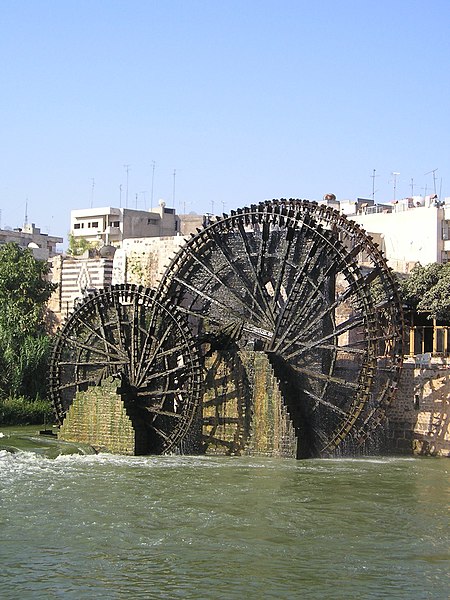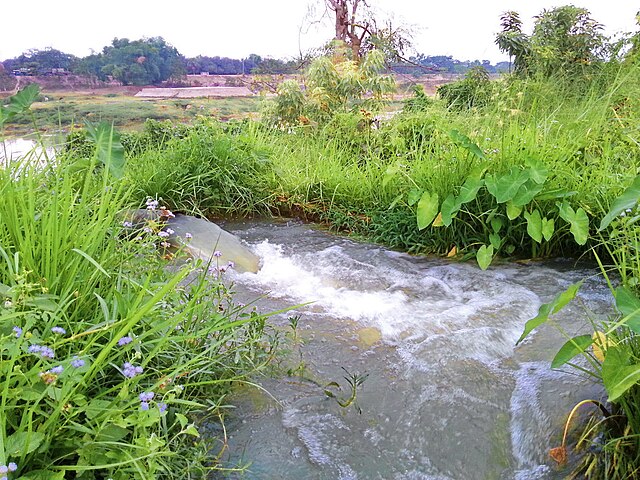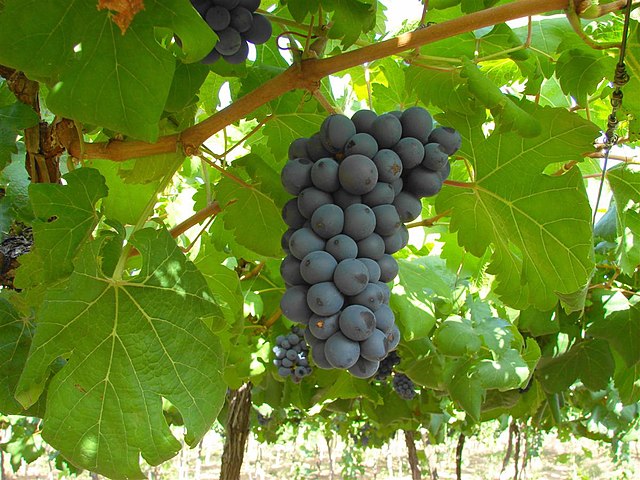A noria is a hydropowered scoop wheel used to lift water into a small aqueduct, either for the purpose of irrigation or to supply water to cities and villages.
The norias of Hama on the Orontes River in Syria (video).
Remains of the medieval Albolafia noria in Cordoba, Spain (the wheel itself was reconstructed in the 20th century)
Noria in Tomar, Portugal. Paired ceramic pots along the wheel collect the water.
Close-up of the previous
Irrigation is the practice of applying controlled amounts of water to land to help grow crops, landscape plants, and lawns. Irrigation has been a key aspect of agriculture for over 5,000 years and has been developed by many cultures around the world. Irrigation helps to grow crops, maintain landscapes, and revegetate disturbed soils in dry areas and during times of below-average rainfall. In addition to these uses, irrigation is also employed to protect crops from frost, suppress weed growth in grain fields, and prevent soil consolidation. It is also used to cool livestock, reduce dust, dispose of sewage, and support mining operations. Drainage, which involves the removal of surface and sub-surface water from a given location, is often studied in conjunction with irrigation.
Irrigation of agricultural fields in Andalusia, Spain. Irrigation canal on the left.
Traditional irrigation channel in Switzerland, collecting water from the high Alps
Irrigation is underway by pump-enabled extraction directly from the Gumti, seen in the background, in Comilla, Bangladesh.
Grapes in Petrolina, Brazil only made possible in this semi arid area by drip irrigation








